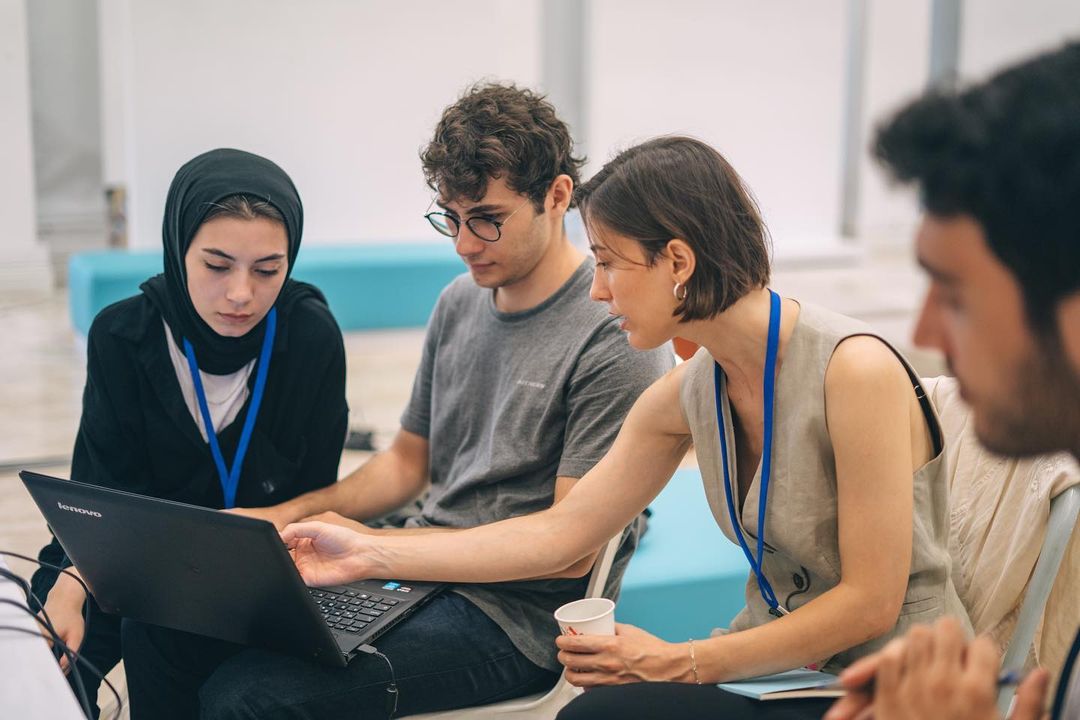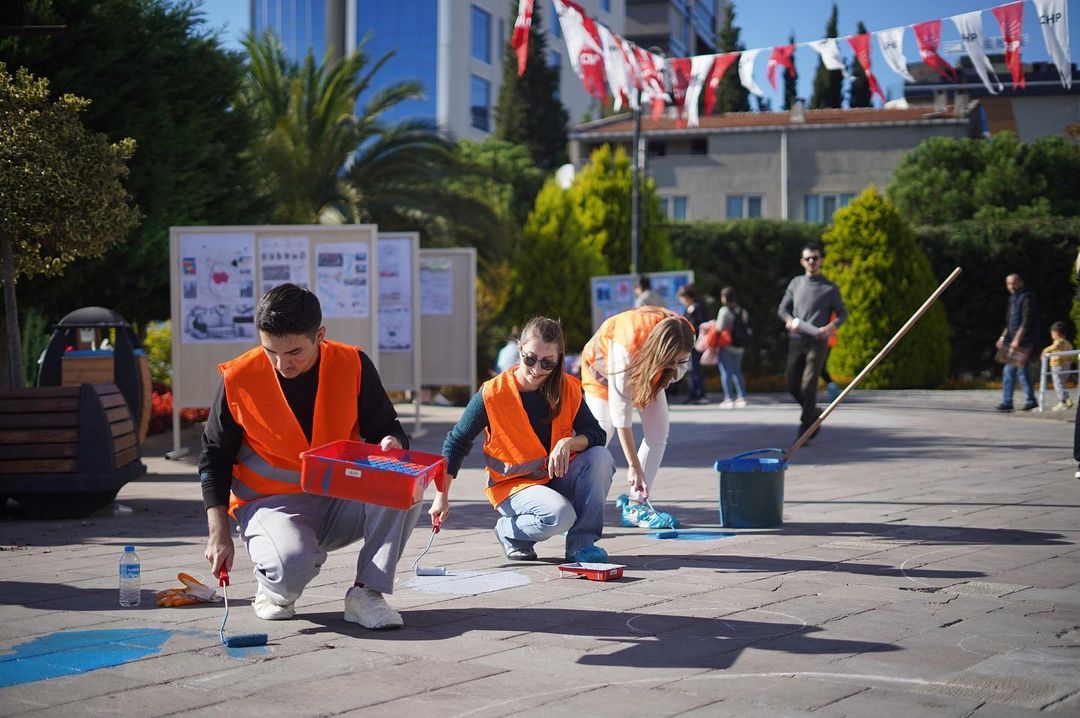
Although it is widely recognized that gender disparities are echoed in the design and operation of urban transportation systems, gender-responsive transportation planning is still in its early stages.
Drawing from the TOPUK project, which stands for “Women Accessing Public Transport,” with topuk meaning “heel” in Turkish, we contend that reshaping streets not only offers women safer living environments but challenges male dominance in mobility spaces.
In collaboration with WRI Türkiye, a coalition of implementing partners utilized street experiments in the neighborhood of Maltepe, Istanbul, as both a participatory platform to raise awareness about gender-blind transport policies and as a means to create safer spaces for women, facilitating their access to public transport and enhancing their participation in daily life and the workforce.
The TOPUK Project
The project began in early 2022 with efforts to highlight the inequalities women experience on public transport routes in Istanbul. Five different stakeholders took part: the IstanbulON Urban Mobility Lab, from Istanbul Technical University; EKA Creative Studio, a private firm; Istanbul Metropolitan Municipality and the Municipality of Maltepe, as local government partners; and Sokak Bizim, meaning “Street Belongs to Us” in Turkish, as a non-governmental partner.
From the determination of problems to be addressed to implementation of temporary solutions, the local community, especially women, were involved in the process via on-site workshops, an open house and creation of pop-up interventions. The TOPUK project team also collected and incorporated feedback and data from the community at each phase of the project: analysis, design and implementation.

Physical changes implemented in the neighborhood included expansion of walkways and seating areas, re-greening of key areas and installation of a children’s game wall. These changes not only improved the attractiveness of the area but enhanced traffic safety and improved sense of security among the local community, particularly women.
The success of these temporary changes even triggered a new collaboration between Maltepe Municipality and Istanbul Metropolitan Municipality to implement additional, permanent changes. Future interventions include activating an accessible elevator that connects the metro station and bus stop to the cultural center and expanding a dead end street to improve traffic flow and parking conditions.
Below, we outline three important lessons learned from the TOPUK project.
Lesson 1: Participatory processes should be tailored to the target group but not exclusive.
The project team initially aimed to only address women-specific issues of public transportation access. At the outset of the project, the team even utilized targeted social media and text message marketing to encourage local women’s participation. However, throughout the course of the project, the team discovered that both genders must be involved to achieve success. And although the interventions implemented by the TOPUK project were not exclusively for women, it managed to effectively integrate women’s perspectives into the neighborhood’s design and implementation.
While some critics may argue that a more women-centric participatory approach could have been beneficial, it’s important to recognize that interventions aimed at improving access to city services and amenities for one group often benefit other groups too. Throughout the TOPUK project, both the local community and project stakeholders worked together to create a street experiment that was inclusive for all, aligning with the call for a feminist reimagining of public spaces characterized by inclusivity, care, comfort, sociability and playfulness. Gender mainstreaming in street experiments holds the potential to pave the way for more inclusive streetscapes.
Lesson 2: Evaluation of experiments’ post-intervention impacts are crucial.
The TOPUK project challenged the male-dominated mobility landscape, even if in a small way, by giving more priority to pedestrians over cars. By replacing on-street parking with widened sidewalks, additional seating areas and green space, more space was created for walking and socializing—which improved safety and comfort for all pedestrians—leading to increased interest in the use of the project area and positive community feedback on the intervention day, particularly from women.

The potential for local government to take these lessons as justification for permanent changes is a significant outcome, and the process is underway to make the temporary changes implemented by the TOPUK project permanent.
However, a formal post-implementation evaluation involving the local community, particularly women respondents, could have made the project’s lessons even more powerful. This evaluation could employ methods such as surveys and focus groups to measure local users’ perceptions of safety, comfort and success of adopted changes. Knowing this information will help local governments and other stakeholders, including the local community, assess the impacts of street experiments through reliable results. The TOPUK project did not involve any tangible evaluations of this sort due to a project timeline shortage caused by bureaucratic issues, which suggests the final lesson below.
Lesson 3: Collaboration helps to address bureaucratic barriers.
From a governance perspective, the project faced a bureaucratic hurdle, particularly in securing approval for street changes. Prior to implementing any temporary changes, clearance from the Istanbul Metropolitan Municipality’s Transport Coordination Center was needed. This ultimately caused delays because the Coordination Center regarded TOPUK’s project partners as external entities despite the Transportation Planning Department, a key municipal unit, being a project partner—albeit in a preferred inactive role, which added to the bureaucratic delays. Fortunately, these municipal units helped facilitate the approval process (anticipated to be complete by mid-2024) allowing both municipalities to implement new, permanent changes by the end of 2024.

The TOPUK project’s diverse consortium of partners enabled the project team to address bureaucratic issues collaboratively, underlining the importance of street experiments as platforms for transformation. But gender-responsive transport policies are crucial for addressing adverse impacts on women, necessitating swift action. This experiment emphasized the significance of setting deadlines for implementing measures and the need for regulations to allow for streamlined experimentation to bring such interventions to life.
—
The TOPUK project’s findings and lessons may offer valuable insights for guiding future street experiments in Maltepe and beyond.
Ultimately, experiments like these, which involve intense community engagement and allow communities to experience changes firsthand before permanent implementation, can help facilitate a systemic shift in urban mobility, reducing the dominance of motorized traffic while better serving women’s needs.
The TOPUK project was funded by the micro-grant support program of the KAVŞAK Network, financed by the European Union.
Imge Akcakaya Waite is Associate Professor of Urban and Regional Planning at Istanbul Technical University.
Arzu Erturan is Assistant Professor of Urban Planning at Mimar Sinan Fine Arts University and Co-Founder of Sokak Bizim.
Hanna Balik is Project Developer for Elgin Energy.
Bahadir Kesan is Director of Strategy Development for the Municipality of Maltepe.
Eda Beyazit is a Research Fellow in Active Travel and Micromobility at the University of the West of England.






